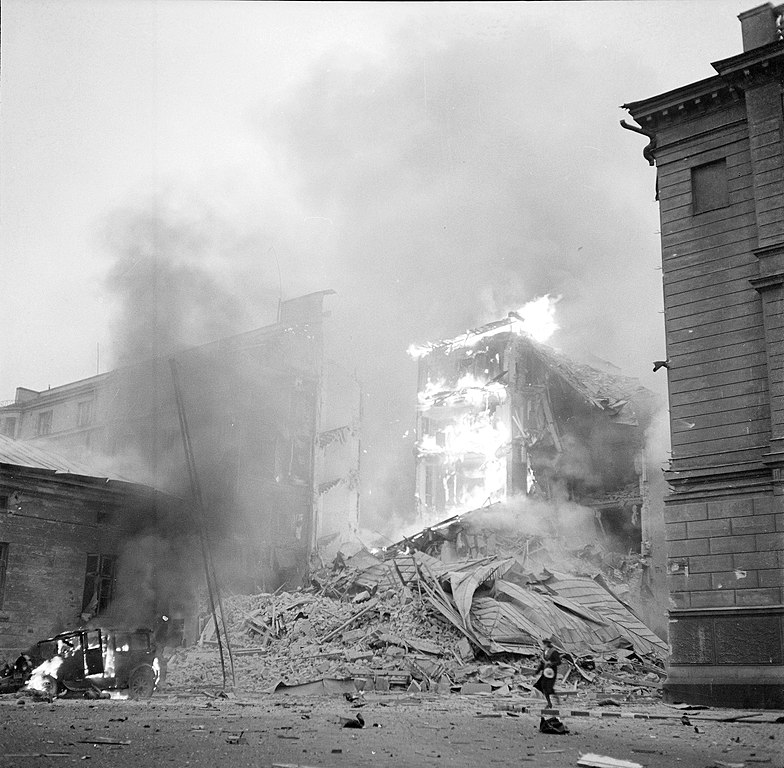
30 Nov 1939
Source:Military Museum,Finnish Ministry of Education and Culture
On 30 November 1939, in what later be called the Winter War, the Soviet Union invaded neighboring Finland. The objectives were both strategic and territorial. Under the (secret)terms of the Molotov-Ribbentrop Pact signed in August, Finland was placed into their sphere of influence. Prior to the invasion, the Soviet Union wanted Finland to cede land that would provide more security for Leningrad (formerly known as St. Petersburg, changed to Petrograd during World War I, and renamed Leningrad in 1924 after Lenin’s death).
Everyone, including the Russians, believed it would be easy. The Soviet Union had more troops and aircraft. It was expected the Finns would easily surrender. It did not turn out that way at all. After the initial attack and bombing of Helsinki where 61 would die, the Finns instead showed remarkable resistance. The Finnish government used pictures of the raid showing women with dead babies and those crippled by the bombings to engender sympathy from the outside world and to generate the Finnish resistance to the Russians. The Soviet Army, dressed in summer clothing as winter started to set in, quickly realized they were facing stiff opposition. President Roosevelt extended $10 million in credit to Finland (they paid it back after the war). The League of Nations expelled the Soviet Union for its invasion.
The Soviet Union though reorganized and came with different tactics in February 1940. Finnish defenses were overcome and resistance, though still strong, was up against a better organized Soviet Army this time. In March 1940 the Moscow Peace Treaty was signed. The Soviet Union got what it initially demanded and more as well. Finland’s sovereignty was preserved but it came at a cost for the Soviet Union. Most Western governments considered the Soviet Red Army as poorly led.
Aftermath
Hitler and his generals viewed the Red Army as weak and that an attack on it would be successful. They would invade Russia in June 1941. Finland though would go to war with the Soviet Union. as well. There are different views as to why but generally it was to get back the land lost in the peace treaty of 1940. Unfortunately, a faction of Finnish military and political leaders decided to work closely with the German Wehrmacht for a joint attack. While never signing formally the Tripartite Pact that made them an ally of Nazi Germany, the did sign the Anti-Comintern Pact. This pact signed by Germany, Japan and other countries created an alliance against the Soviet Union.
Finland would retake the territories given to Russia but continued on. They participated in the siege of Leningrad by cutting its northern supply. The Soviet Army would eventually push them back and a ceasefire was called on 5 September 1944. The resulting agreement would require the expulsion or disarming of German troops in their territory. Under pressure from the Soviets to expel German forces, Finnish troops fired on German soldiers resulting in exchanges between the two. By November 1944 nearly all German troops had withdrawn. With the end of the war in 1945, the borders were restored to the 1940 treaty. Finland had to pay war reparations to the Soviet Union. Since they fought with Germany, they had to accept responsibility for their part in the war and acknowledge they had been a German ally.
Sources:
Russo-Finnish War (Britannica.com)
Winter War (History.com)
Winter War, Continuation War & Lapland War (Wikipedia.com)

